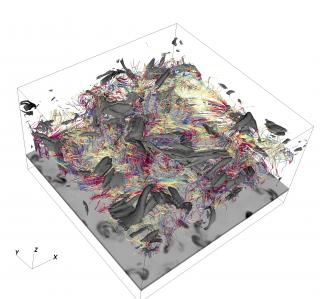General
Este proyecto mantiene dos líneas principales de investigación activas:
1) Estudio de la estructura, condiciones físicas y composición química de las nebulosas ionizadas, tanto galácticas como extragalácticas, a través del análisis detallado y modelización de sus espectros. Investigación de los gradientes de composición química a lo largo del disco de nuestra galaxia y en galaxias cercanas.
2) Determinar las condiciones físico-químicas de las nebulosas planetarias galácticas con geometría bipolar y de las nebulosas alrededor de estrellas simbióticas. El fin es entender el origen de la bipolaridad y poner a prueba los modelos teóricos que intentan explicar la morfología y la cinemática nebular, con especial énfasis en los modelos con estrellas binarias centrales. Estudiaremos también las implicaciones de la evolución de los sistemas binarios en otros escenarios astrofísicos, como la formación de jets, las variables cataclismicas y las explosiones de tipo nova y supernova
Miembros
Resultados
- Usando espectros en el rango infrarojo cercano obtenidos con EMIR/GTC, se han detectado por primera vez líneas de emisión de telurio y bromo en dos nebulosas planetarias. Estas son detecciones de elementos pesados en uno de los lugares en dónde se forman, nos dan información sobre el patrón de abundancias de elementos pesados debido al proceso-r y al proceso-s.
![Izquierda - Imagen RGB de la nebulosa de Orión y M43 obtenida filtros estrechos con la cámara WFC en el INT: H alfa (rojo), [S II] 6716+30 (verde), [O III] 5007 (azul). Derecha - Imagen en falso color de la nebulosa planetaria NGC 6778. En azul se ve la emisión en la línea de O II tomada con el filtro sintonizable azul del instrumento OSIRIS en el GTC; en verde imagen con el filtro estrecho de [O III] del Nordic Optical Telescope (NOT). Izquierda - Imagen RGB de la nebulosa de Orión y M43 obtenida filtros estrechos con la cámara WFC en el INT: H alfa (rojo), [S II] 6716+30 (verde), [O III] 5007 (azul). Derecha - Imagen en falso color de la nebulosa planetaria NGC 6778. En azul se ve la emisión en la línea de O II tomada con el filtro sintonizable azul del instrumento OSIRIS en el GTC; en verde imagen con el filtro estrecho de [O III] del Nordic Optical Telescope (NOT).](/sites/default/files/styles/crop_rectangle_21x9_to_1280/public/images/project/imagen_web.jpg?itok=_CZ-LRtm)


